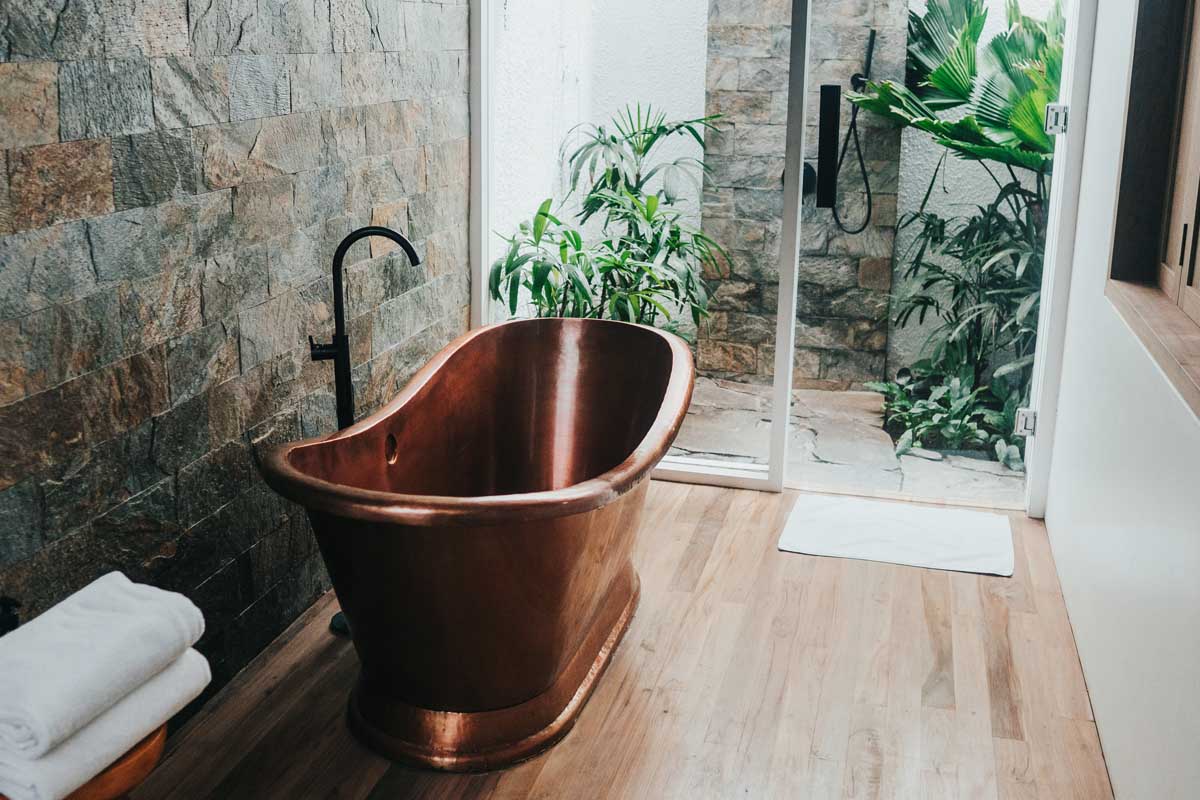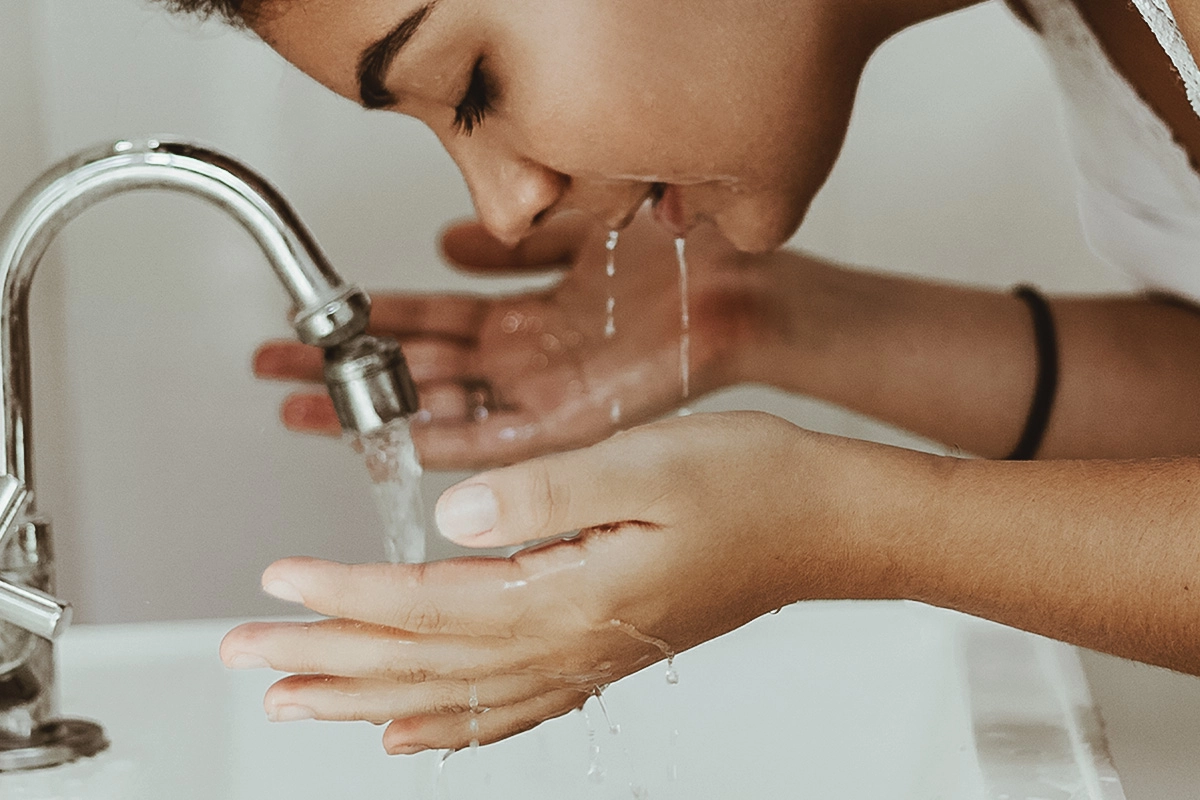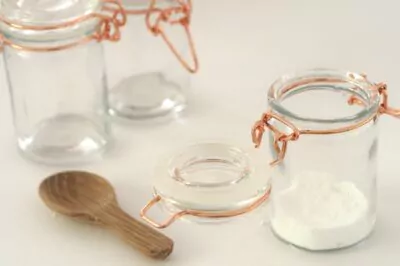Table of Contents[Hide][Show]
We’ve all heard the myths, passed down like folklore. “Use hot water to open your pores,” some say. “Finish with a splash of ice-cold water to close them,” others insist. This simple, daily act of washing our face is surrounded by so much conflicting advice that most of us just turn the tap, guess at a temperature, and hope for the best.
So, what is the real, science-backed answer? Does the temperature of the water you use truly impact the health and balance of your skin, or is it all just an old wives’ tale?
Consider this guidethe end of the debate. We’ll explore the simple science behind how different water temperatures affect your skin’s delicate barrier. More importantly, we’ll provide the one, esthetician-approved answer you need for a cleanse that supports a truly healthy and radiant complexion.
The Temperature Verdict: Why Lukewarm Water Wins for Skin Health

When it comes to this debate, the answer isn’t found in the extremes, but in the gentle middle ground. For the long-term health and balance of your skin, lukewarm water is the undisputed winner. To understand why this simple choice is so impactful, we first need to explore the myths and realities of using hot and cold water.
The Problem with Hot Water: A Barrier-Stripping Mistake
We understand the appeal—a steaming hot wash can feel deeply purifying. However, that satisfying heat is often a sign of damage. Your skin is protected by a delicate, intelligent barrier of natural oils (often called the acid mantle) that keeps moisture in and irritants out. Hot water acts like a harsh solvent, stripping away these essential lipids and leaving your skin feeling tight, vulnerable, and prone to dehydration. This can trigger a rebound effect where oily skin produces even more oil to compensate, while dry skin feels even more parched and uncomfortable. After compromising the skin’s barrier, it’s crucial to replenish it, which is why understanding the benefits of facial oil for your skin is such a foundational piece of skin care knowledge.
If you have oily skin, you may be hesitant to reach for a facial oil—but the right one can actually help balance your complexion. When the skin is stripped of its natural moisture, it often overproduces sebum to make up for the loss. Applying a pure, lightweight facial oil like our Herbal Facial Oil for Oily Skin helps restore harmony, signaling to your skin that it’s properly hydrated and doesn’t need to go into overdrive. The result? A calmer, clearer, more balanced complexion with less excess shine over time.
The Problem with Cold Water: An Ineffective Cleanse
While a cold splash can feel wonderfully refreshing and may help temporarily reduce morning puffiness, it’s simply not effective for your primary cleanse. Cold water causes the capillaries near the surface of your skin to constrict and doesn’t properly soften or dissolve the day’s grime, makeup, and sebum. This makes it much harder for your cleanser to emulsify and do its job, which can lead to a less thorough wash and leave behind residue that may contribute to congestion over time.
The Truth About Lukewarm Water: The Perfect Balance
Your skin prefers balance over extremes. Lukewarm water cleans without stripping, helping your barrier stay strong and hydrated.It is warm enough to help soften the oil and debris on your face, allowing your cleanser to effectively purify the skin. At the same time, it’s cool enough that it does so gently, without stripping your skin’s essential lipid barrier. It provides the perfect balance for a deep, effective cleanse that fully respects your skin’s natural integrity.
Beyond the Face: A Note on Hot Showers

We understand the appeal. Especially on a cold day or after a long workout, the thought of a long, steaming shower feels like the ultimate comfort. But the same principles of barrier protection we honor on our face, apply to every inch of our skin. The skin on your body, while less delicate than your face, is still protected by that same essential lipid barrier.
Think of it this way: just as hot water effectively cuts through grease on a dinner plate, it does the same to the protective oils that keep your body’s skin hydrated and healthy. When this barrier is repeatedly stripped away in a hot shower, it can lead to more than just a temporary feeling of dryness. It can trigger a frustrating cycle of persistent itchiness, flakiness, and a compromised state that makes your skin more vulnerable to environmental irritants and sensitivity.
The kindest choice you can make for your skin is to embrace shorter, warm showers. However, if you truly cherish that moment of heat, the ritual that follows becomes non-negotiable. The secret is to moisturize while your skin is still damp. Immediately after patting yourself gently with a towel, generously apply a nourishing body oil or butter. This is the crucial step: you’re not just adding moisture, you’re using the oil to seal in the water droplets left on your skin, transforming a simple act into a powerful moment of replenishment that leaves skin feeling velvety and cared for all day.
Using Heat Intelligently: The Power of a Steam Ritual

Now, this doesn’t mean all forms of heat are the enemy of your skin. The key to a healthy ritual is to distinguish between the harsh, stripping heat of running hot water and the gentle, beneficial heat of steam. When used correctly as a preparatory step, steam can be a powerful and beautiful tool to elevate your cleansing ritual.
You can create a simple, spa-like experience at home to help soften hardened sebum and debris within your pores, making your actual cleanse more effective. Think of hardened oil in a pore like cold butter in a dish; a gentle steam session warms it, making it much easier to be washed away. Here’s how to do it safely:
- Step 1: Bring a small pot of filtered water to a boil, then remove it from the heat and place it on a stable surface like a folded towel on your table.
- Step 2: Carefully position your face about 16 inches away from the steaming water. It should feel pleasantly warm, not hot.
- Step 3: Drape a light towel over your head and the pot to create a tent, trapping the warm, gentle steam.
- Step 4: Close your eyes, relax, and breathe deeply for about five minutes. For an added touch of calm, you can add a few drops of a skin-safe essential oil, like lavender, to the water.
- Step 5: Your skin is now perfectly prepped. Immediately follow with a gentle cleanser and lukewarm water to purify the softened pores and wash away impurities.
Understanding Your Skin’s Changing Relationship With Water
While using lukewarm water is a universal rule for healthy skin, the importance of this simple habit grows as your skin evolves. Understanding why it’s so critical at each stage can empower you to make this a foundational part of your ritual.
Skin Care for Your 30s: Building Healthy Habits
This is the foundational decade for your skin. The primary goal is to solidify the gentle, protective habits that will serve you for years to come. Consistently choosing lukewarm water over hot is a simple but powerful act that helps preserve your skin barrier’s integrity. Think of it as making a long-term investment in your skin’s resilience, a core principle of an intelligent approach to skin care in your 30s that prevents the cumulative damage that can lead to sensitivity later on.
Skin Care for Your 40s: Prioritizing Barrier Support
As you enter your 40s, your skin’s natural oil production begins to gently decline, making your protective barrier more susceptible to dehydration. This is when avoiding the stripping effects of hot water becomes more critical than ever. A lukewarm cleanse ensures your skin feels comfortable, balanced, and nourished, not tight and depleted. This mindset—viewing your cleanse as a moment to protect, not just purify—is a key part of effective skin care in your 40s.
Skin Care for Your 50s and Beyond: A Non-Negotiable for Comfort
In your 50s and beyond, the skin barrier is often at its most delicate. Protecting it becomes the highest priority. A lukewarm cleanse is a non-negotiable act of kindness that purifies the skin while honoring and protecting its precious moisture. It’s a simple switch that ensures your skin stays feeling soft, comfortable, and resilient every single day.
The Gentle Truth for Healthy Skin
The great debate is officially over. It’s not the chill or the heat your skin needs—it’s the quiet balance in between.Lukewarm water is the undisputed, esthetician-approved, and science-backed choice for a cleanse that is both deeply effective and profoundly gentle, protecting your skin’s health for the long term.
We encourage you to pay attention to this simple detail in your daily ritual. It’s a small shift that makes a world of difference. Notice how much more comfortable, calm, and balanced your skin feels when you honor it by ditching the extremes.
A perfect cleanse creates the ideal canvas for the rest of your routine. After patting your skin dry, follow with your favorite serums and seal in all that goodness with a nourishing facial oil. Formulas like our Anti-Aging Facial Oil or Rejuvenating Facial Oil are crafted to replenish and restore. We invite you to explore our full Facial Oils collection to find your perfect match.
Frequently Asked Questions
What about a final “cold splash” to close pores?
While a final cold splash can certainly feel refreshing and help temporarily tighten the skin’s appearance, the idea that it “closes” pores is a popular myth. Pores don’t have muscles to open and close. So, while it’s a nice sensation, it’s not a necessary step for your skin’s health.
What should I apply to my skin right after cleansing?
Immediately after patting your skin dry is the perfect time to apply your most potent, targeted treatments. This is directly related to understanding the key differences between a facial oil and a serum, and which one should come first.
Do the same temperature rules apply to both steps of double cleansing?
Yes, absolutely. The principle of using lukewarm water is consistent for the entire ritual. For your first step with an oil cleanser, lukewarm water is essential to properly emulsify the oil (turn it milky), which allows it to rinse off cleanly. For your second cleanse, the same rule applies to ensure you are washing away any remaining impurities without stripping the skin.








Leave a Reply